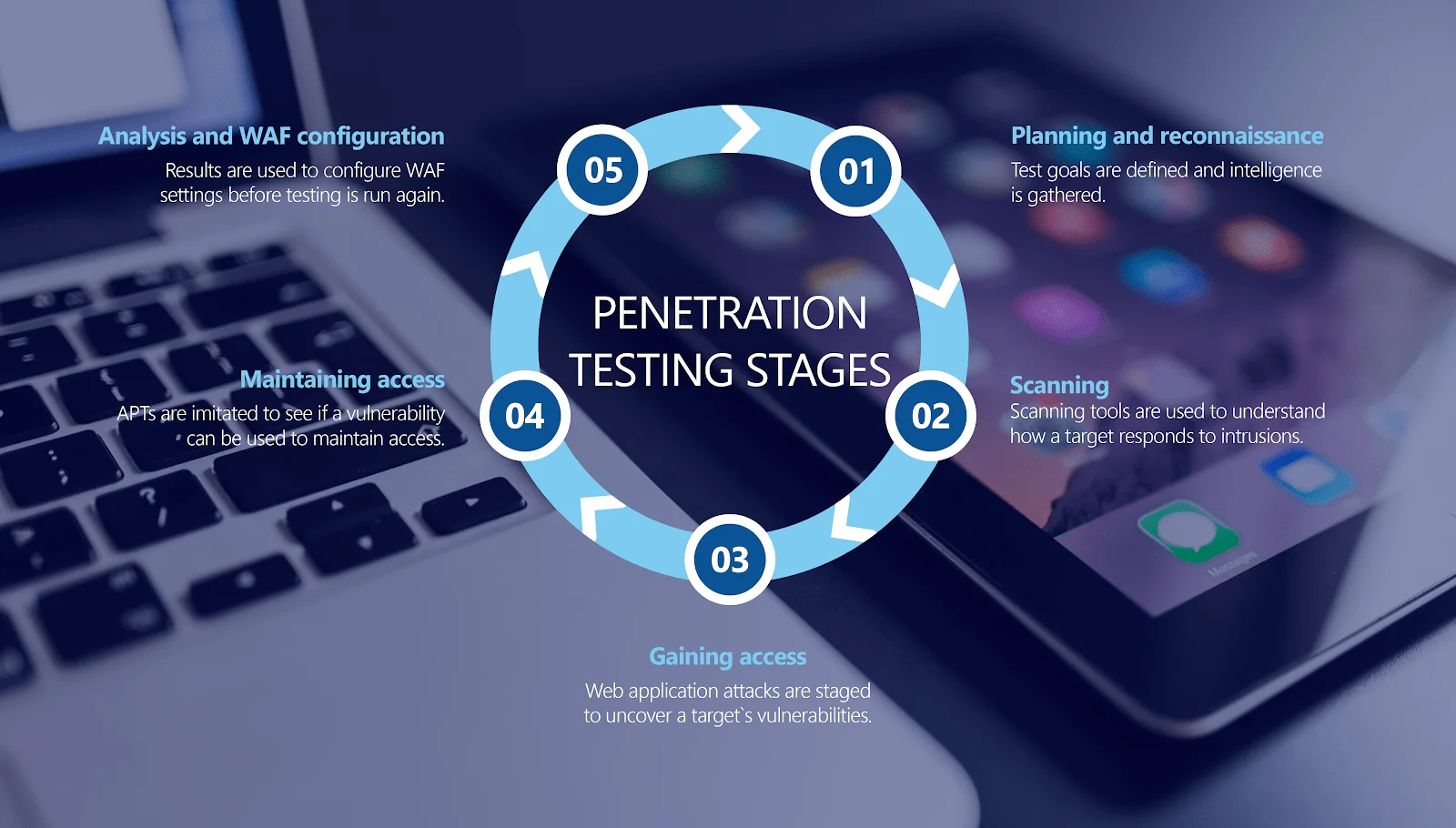Every software development company wants to test its solutions from the user’s perspective. They need to ensure that the application is secure and reliable no matter what. But testing the solution from the user’s point of view can be quite difficult because developers are unable to identify the kind of security threat a user might experience on his/her device.
However, penetration testing has made it possible for software development companies to test the security and reliability of software solutions more precisely. So what is penetration testing, and what is its benefit in testing for mobile and web applications?
Let’s find out…
What is Penetration Testing?
Penetration testing (also known as pen testing) assesses the security of computer systems and mobile or web applications by simulating attacks on those systems. Penetration testing aims to identify vulnerabilities in the target network or solution and then exploit them. The penetration testing process is a well-recognized security discipline that helps organizations evaluate their cybersecurity posture from an external perspective. It can be used to identify potential weaknesses, so they can be fixed before attackers have time to exploit them.
The term Pentesting was first used in 1988 by Kevin Poulsen, an employee of Digital Equipment Corporation Corporation and hacker known as “Dark Dante” after he broke into a computer system owned by AT&T at Bell Labs, where he discovered that hackers had penetrated it and that there was a backdoor to it.
Penetration testing is an activity where penetration testers try to find vulnerabilities in a system or network. External testers and internal security experts conduct the penetration tests. Penetration tests are performed to determine if an attacker has compromised a system or network.
Penetration testing has many benefits for organizations, including the following:
- Help prevent security breaches
- Reduce costs and improve efficiency
- Reduce the risk of business disruption
- Provide a better understanding of your organization’s security posture
- Enable decision-makers to make informed decisions
The Benefits Of Penetration Testing For Mobile And Web Applications
Penetration security testing is a continuous process that aims to significantly improve the efficiency of both mobile as well as web applications. It provides testers with innovative tools that are capable of testing applications on multiple operating systems (OS), devices, browsers, and much more. This considerably reduces time to market and improves the testers’ efficiency. Penetration testing for mobile and web applications also provides several other benefits to the software development firm and testers, such as:
1. A wide selection of penetration testing tool
Penetration testing is an automated way to test security controls in your organization’s perimeter defenses and internal networks for vulnerabilities. It can be done by any number of tools, each with its own strengths and weaknesses.
2. Testing can be done on individual modules
Penetration testing helps determine which parts of your network are vulnerable to attack and how best to fortify those weaknesses. The tests are often done on live systems, so they can be used as a precursor to other types of testing (e.g., fuzzing).
3. Provides easier test option for your project
Penetration tests allow you to compare the effectiveness of different tools, techniques, and approaches in order to determine which best suits your needs at that particular time and place within your organization’s network architecture.
4. Provide alert even before a threat occurs
Penetration testing provides an early warning system for potential attackers who might try to exploit any weaknesses discovered during the test process – before any damage actually occurs! It is used to test the security of an organization by attempting to gain unauthorized access to its systems, devices, and networks.
6. It quickly and promptly discovers vulnerabilities
Penetration testing is a vulnerability assessment involving a hacker trying to break into a mobile or web application system or network. It aims to find vulnerabilities that allow hackers to gain access to sensitive data or take over systems with malicious intent.
Some other benefits of penetration testing include:
- Testing identifies weak points in your security infrastructure so that you can improve your overall security posture.
- It helps you identify and fix vulnerabilities before hackers or criminals exploit them.
- A successful penetration test can help an organization reduce the risk of being hacked in the future because it shows where weaknesses exist within the current security architecture.
- It will show you how well-prepared your organization is for future attacks by giving insight into how well it protects itself against threats today (for example, how well it isolates systems and services).
- Penetration tests can be conducted remotely over the Internet (as opposed to onsite) as long as they’re performed by ethical hackers who follow proper guidelines set forth by the software development company.
Conclusion
Penetration testing is one of the most effective test methods for mobile and web applications. Nowadays, there are several test automation services companies that are capable of providing automated penetration testing solutions. Such automated testing help software developers reduce manual labor and time to market. Automated tests provide more accurate data at a faster rate that is otherwise impossible by manual testers. It significantly increases employee productivity and software efficiency as well as reduces development expenses.

